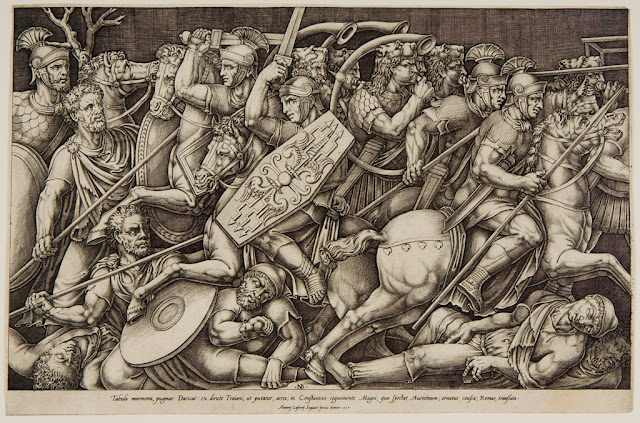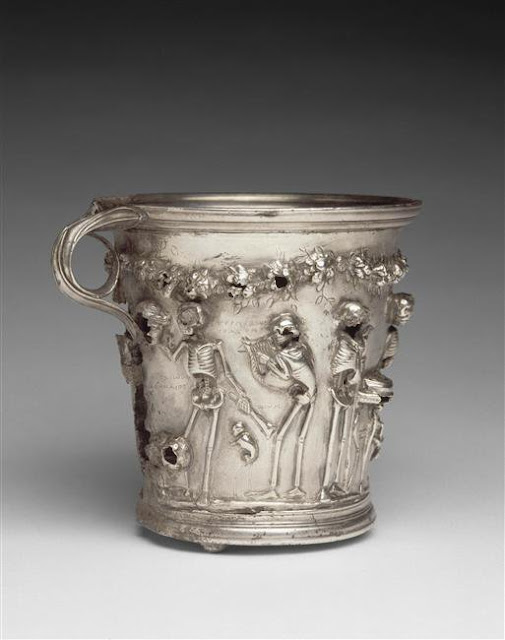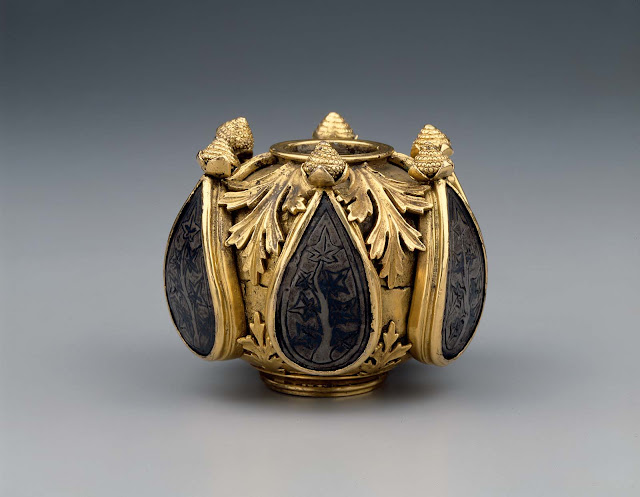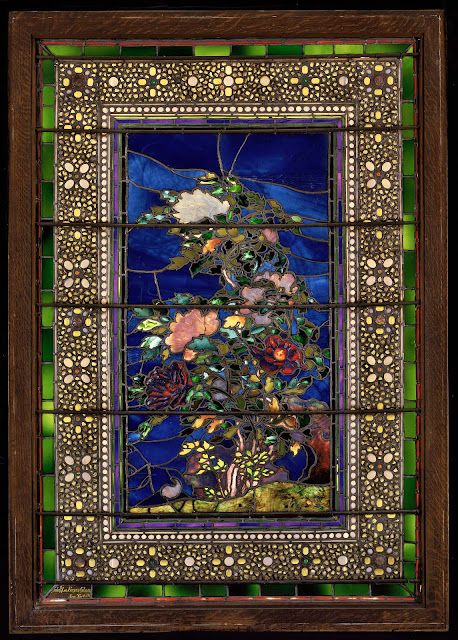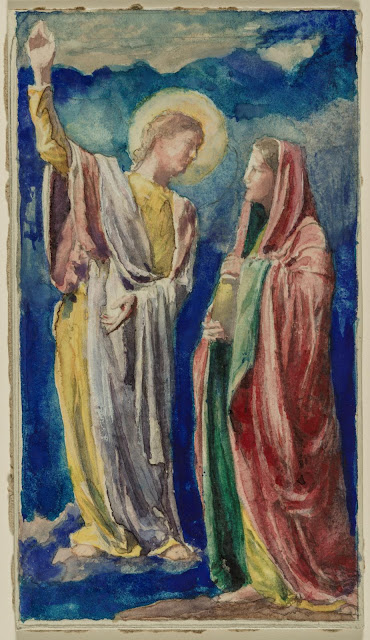 |
| attributed to Jean Le Pautre Antique Relief - Frieze of Mythological Figures and Creatures before 1682 drawing Harvard Art Museums |
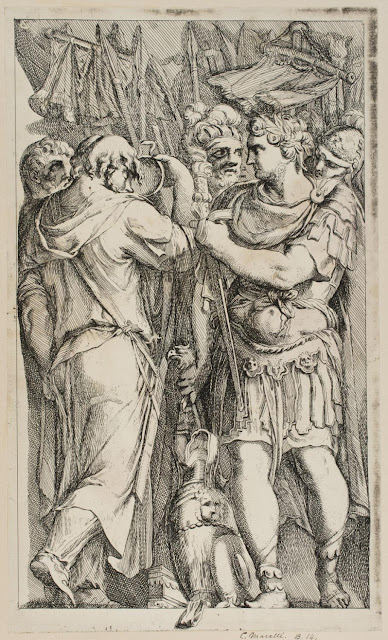 |
| Carlo Maratti after Polidoro da Caravaggio Bas-Relief with Roman Emperor ca. 1660 etching Philadelphia Museum of Art |
 |
| Aubert-Henri-Joseph Parent Vase or Wine Cooler on Classical Pedestal with Relief of Putti playing with Theatrical Mask ca. 1784 drawing Metropolitan Museum of Art, New York |
"Piazza Sta Maria del Pianto, Rome (1840). A pensive study of old clothes sun-sipped dry in the Jews' quarter, hanging out of a marble architrave smashed & built into a piece of Roman frieze moldering into broken brickwork projected over wooden windows propped on gray entablature. A vestige of yet-legible inscription: NOMINE FORTUNA. No important lines, no beauty of object. A pendent hodgepodge of contrasted feeling cheesecaked into picturesque febrility. An episode. A grief in, as it were, parenthesis. A match without a marriage, as after news of an engagement. A church embedded sans façade among the common sort of houses. A succor from St Peter's mere bewilderment & worry. Graphite heightened w/ touches of white body color on gray-green paper."
– from Brantwood Senilia, a long poem by Paul Batchelor, heavily indebted to the writings and drawings of John Ruskin (1819-1900)
 |
| Anicet Charles Gabriel Lemonnier Study of a Sculptural Relief in the Capitoline Gallery, Rome ca. 1775-1800 drawing Fine Arts Museums of San Francisco (Achenbach Foundation) |
 |
| Filippo Morghen Head of Medusa after Antique Relief ca. 1775 etching, engraving Philadelphia Museum of Art |
 |
| Stefano Mulinari after Giulio Romano Classical Relief with Nudes, Dolphins, and Eagle before 1790 etching Fine Arts Museums of San Francisco (Achenbach Foundation) |
The Sonnets: I
His piercing pince-nez. Some dim frieze
Hands point to a dim frieze, in the dark night.
In the book of his music the corners have straightened:
Which owe their presence to our sleeping hands.
The ox-blood from the hands which play
For fire for warmth for hands for growth
Is there room in the room that you room in?
Upon his structured tomb:
Still they mean something. For the dance
And the architecture.
Weave among incidents
May be portentous to him
We are the sleeping fragments of his sky,
Wind giving presence to fragments.
– Ted Berrigan, from The Sonnets (New York: Lorenz and Ellen Gude, 1964)
 |
| Gottlieb Friedrich Riedel Antique Relief with Diana and a Hunter ca. 1750-80 etching Philadelphia Museum of Art |
 |
| Gottlieb Friedrich Riedel Antique Relief with Apotheosis of Faustina ca. 1750-80 etching Philadelphia Museum of Art |
 |
| Gottlieb Friedrich Riedel Antique Relief with Marcus Aurelius and the Germans ca. 1750-80 etching Philadelphia Museum of Art |
 |
| Gottlieb Friedrich Riedel Antique Relief with Marcus Aurelius at the Tribunal ca. 1750-80 etching Philadelphia Museum of Art |
 |
| Gottlieb Friedrich Riedel Antique Relief with Perseus and Andromeda ca. 1750-80 etching Philadelphia Museum of Art |
 |
| Luigi Schiavonetti Classical Relief 1810 etching, engraving Philadelphia Museum of Art |
 |
| Anonymous French printmaker Fragment of Ancient Bas-relief ca. 1820 engraving Philadelphia Museum of Art |
 |
| John Samuel Agar Bronze Relief 1834 engraving Philadelphia Museum of Art |
 |
| Frédéric Flachéron Bas-relief from the Arch of Constantine, Rome 1849 paper negative Metropolitan Museum of Art, New York |
"The sculptor, medalist, and photographer Flachéron arrived at the French Academy in Rome upon winning a Prix de Rome in 1839. He married soon after and took over his father-in-law's art supply store near the Piazza di Spagna. After learning the waxed paper negative process in 1848, he began to sell photographic equipment and photographs. His prints were displayed at London's Great Exhibition in 1851 and collected by prominent French artists such as Alexandre Cabanel, Hippolyte Flandrin, and Charles Garnier. The waxing process, a modification of Talbot's calotype method, resulted in a more transparent negative, and thus sharper prints. It became a favored medium for artists working under the conditions of intense sunlight in Rome."
– curator's notes from the Metropolitan Museum of Art












